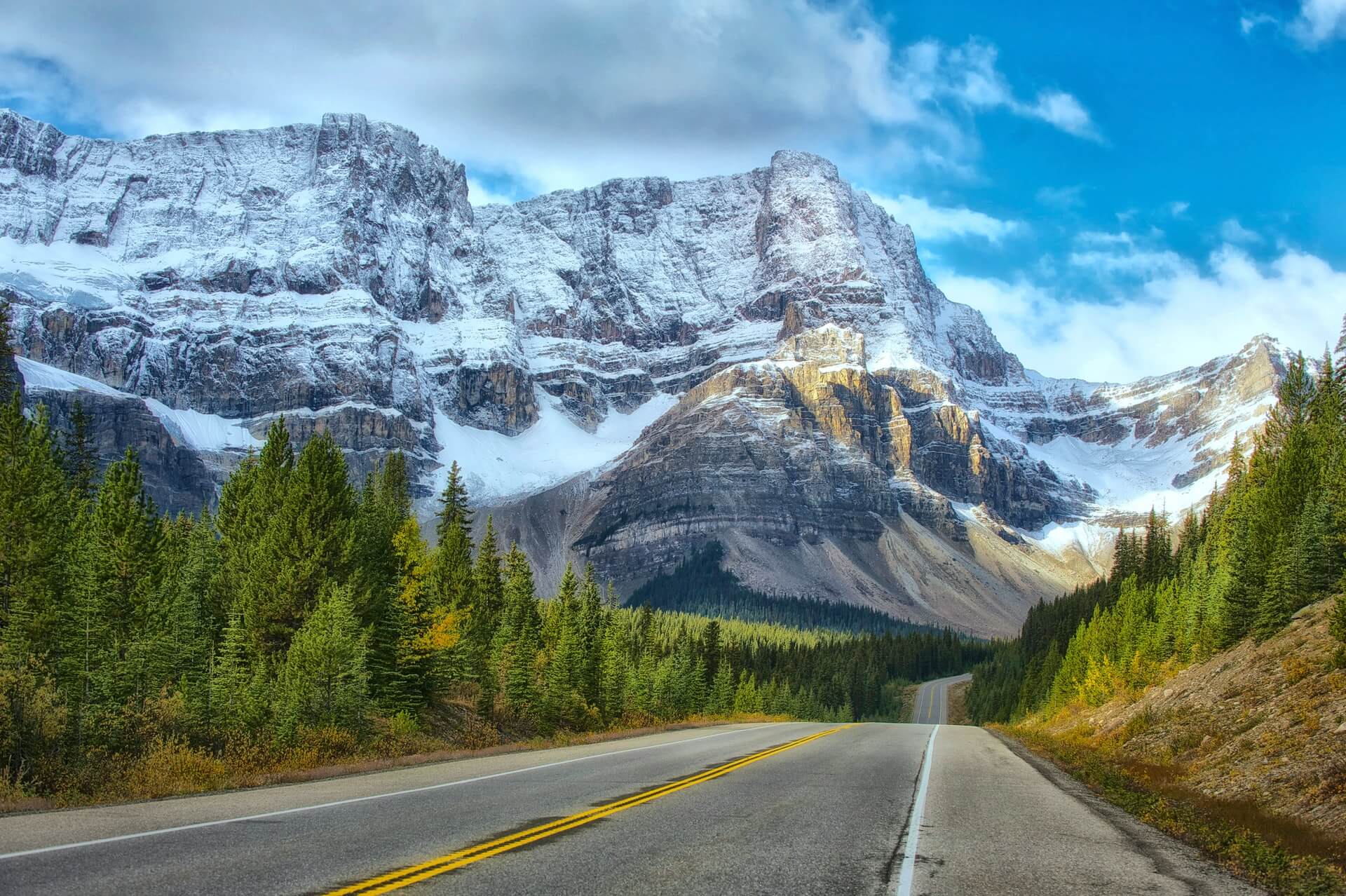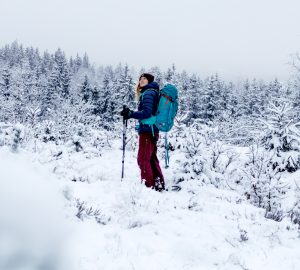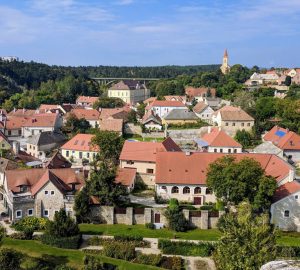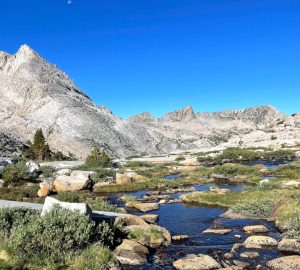Forests as far as the eye can reach, breathtaking mountain peaks, tranquil lakes and glittering skylines of exciting cities: Canada offers many good reasons to dedicate a longer article to the country. First and foremost, the second largest country in the world is a huge outdoor playground for every imaginable activity. Whether it’s white water kayaking, mountain biking, skiing, climbing, hiking or trekking.
Here’s what’s waiting for you in this post. In a hurry? Then click on one of the links to jump directly to the respective text section:
To understand the whole country in its beauty and diversity, two weeks (or just one trip) is simply not enough. To give you an idea of what to expect at both ends (and in the middle!) of Canada, we’ve put together a five- to six-week road trip from Halifax to Vancouver in this post.
You can easily shorten this itinerary by omitting the places in italics or not including all of them. Alternatively, you can target only one of the two coasts and take more time for it. Our plan is that you will need about two weeks each for the east and west coast. Of course, you can also do this route the other way around.
Itinerary for six weeks Canada compact
East Coast
- Day 1-3: Halifax and the Atlantic Provinces
- Day 4: Quebec City
- Day 5-7: Montreal
- Day 8-9: Ottawa
- Day 10-13: Toronto and Niagara
Heartland
- Day 14-21: Ontario to Winnipeg
- Day 22-25: Manitoba and Saksatchewan
- Day 26-27: Calgary
West Coast
- Day 28-30: Banff
- Day 31-33: Jasper
- Day 34-36: Whistler
- Day 37-40: Vancouver and return flight
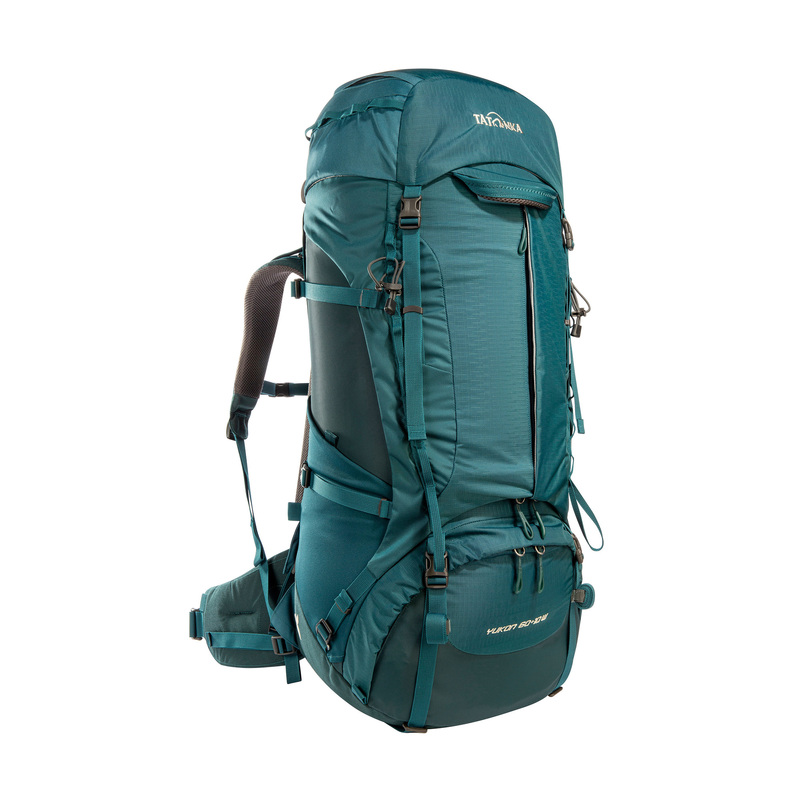
Our backpacks of the Yukon series are the perfect companions for your Canada trip. The V2 carrying system makes the Yukon extremely comfortable to carry, even over long periods of time. And thanks to its large all-round zipper, the backpack can be packed in no time at all.
Halifax and the Atlantic Provinces
If you want to experience Canada off the beaten track, the Atlantic Provinces (Nova Scotia, Prince Edward Island, New Brunswick, Newfoundland and Labrador) are one of the easiest ways to do it. Most flights from Europe land in Toronto and Montreal, both major metropolises west of this rugged, stormy landscape often compared to Scotland, Scandinavia or Brittany. That’s why most backpackers begin their journey through Canada there and orient themselves westward. However, with only two stopovers from, for example, Munich, you’ll also be in Halifax within 16 hours, allowing you to travel the country completely from east to west.
In addition to the laid-back coastal city of Halifax, which boasts surprises like a Titanic museum and a lively harbor promenade, Canada’s eastern provinces are a must-do, especially for their ravishing nature. Whether it’s hiking in Cape Breton, experiencing the world’s strongest tides in beautiful Fundy National Park, or discovering fjords and endless space in Newfoundland and Labrador: You can easily spend several weeks here without getting bored. Since the direction of this road trip is clearly always west, your route from Halifax and Cape Breton will probably lead you more inland towards Quebec.
We’ll show you how to behave properly in Canada’s wilderness in this post of our behavioral rules article series.
Quebec City
A small culture shock awaits you in Quebec City: The capital of the province of the same name is the historic center of French Canada. Here you will hardly hear the English language on the streets. For one or two days, there is a lot to discover here: The historic old town sits on a hill and has many architectural highlights, such as the venerable luxury hotel Château Frontenac and the Sainte-Anne-de-Beaupré Basilica. Quebec City is also the only walled city in North America, a relic of colonial times.
If you’ve come to Canada for paddling, among other things, Quebec City is a good base to plan your expedition on the St. Lawrence River, which empties into the Atlantic here.
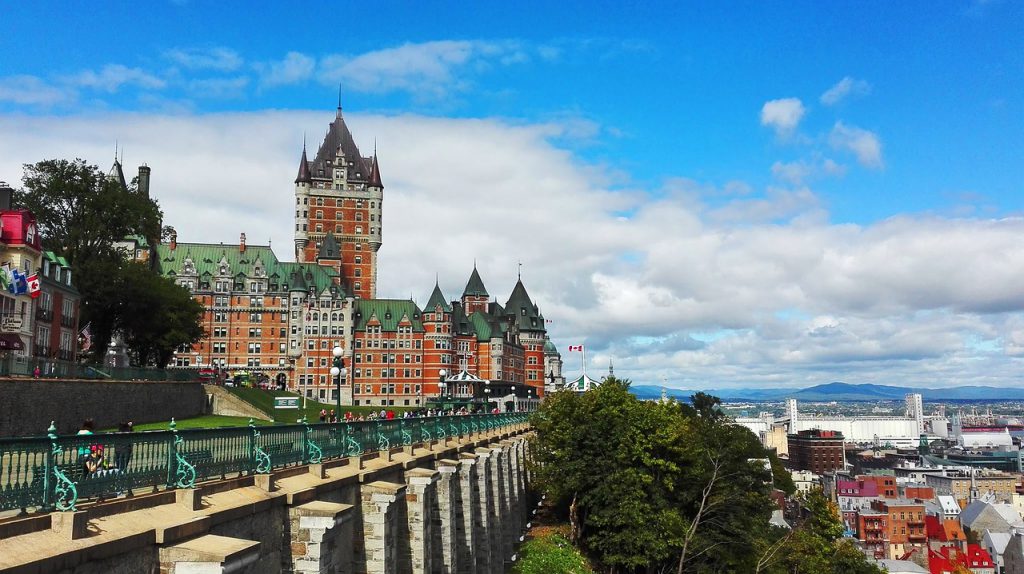
Montreal
After a little taste of Canada’s cities, you’re about to meet one of the big ones: Montreal. The city regularly occupies one of the top places on various quality-of-life indices. The French-Canadian character makes Montreal architecturally very appealing and home to numerous small, cute cafés, restaurants and boutiques. French is also the dominant language here, which will make you feel like you’ve arrived in an Americanized version of Paris.
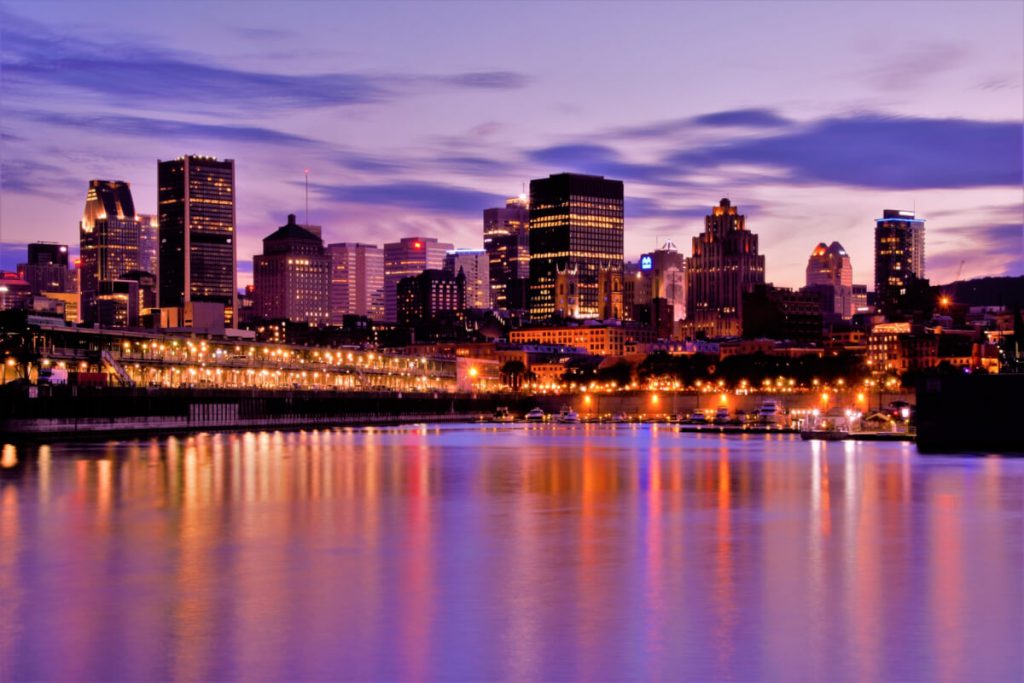
The city’s roaring nightlife has made it world famous, as well as its hyperactive art, music and culture scene. If you have time, you should definitely plan on spending more than a few days in Montreal to soak up the vibe of this cosmopolitan city. Also, be sure to check out if any of the numerous festivals happen to be taking place during your stay in Montreal.
For a bit of an outdoor feel, the hike up Mont Royal is a must. For a different kind of “walk,” check out the world’s largest underground pedestrian mall: RESÓ is an underground network of 20 miles of stores, hotels and offices, right under the city!
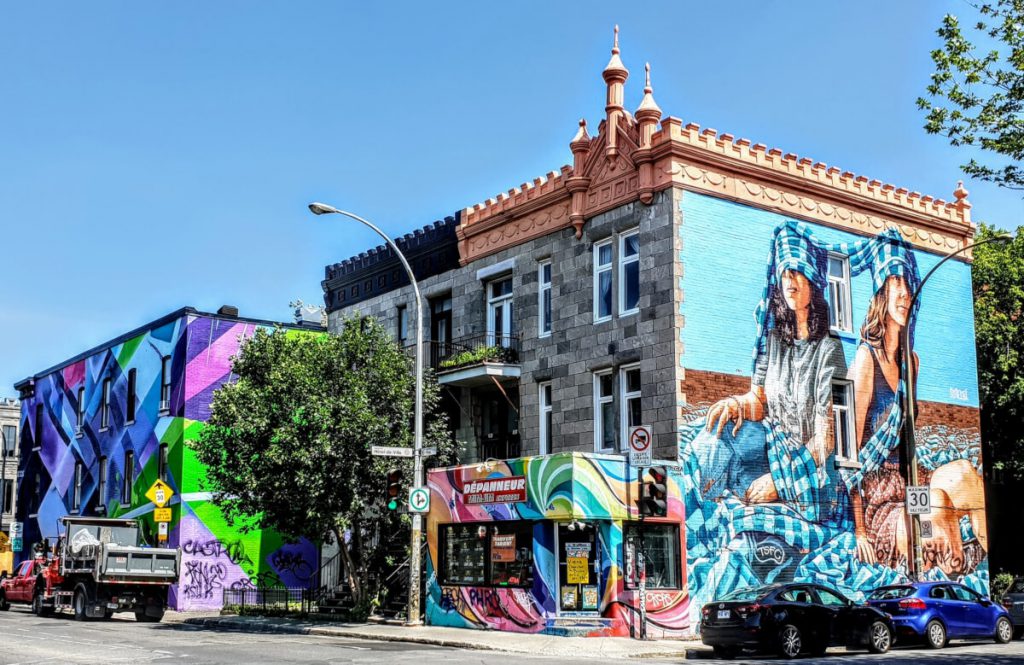
Ottawa
Canada’s capital city has long had the reputation of having nothing going on. That’s understandable if you take neighboring metropolises Toronto and Montreal as a comparison – and still far from the truth. Ottawa is a very green, livable city that has seen a big economic boom thanks to the tech boom. Attractions like Parliament Hill (be sure to book a tour!), countless museums, or the history-rich ByWard Market give you easily enough to do to justify your own city break here.
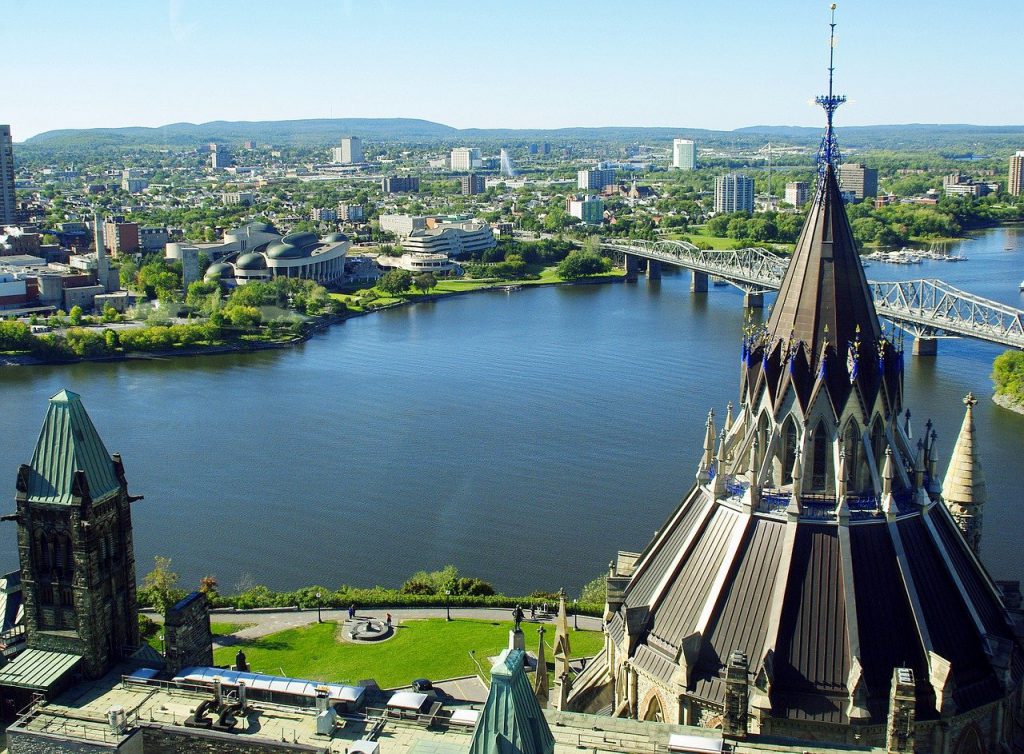
The Rideau Canal, which is a great kayaking spot in summer and the world’s largest skating rink in winter, is one of the city’s outdoor attractions. In the immediate surroundings you will also find the fantastic Gatineau Park: Here you can walk, bike, climb, kayak, swim or even camp overnight. There are even bears living in parts of the park!
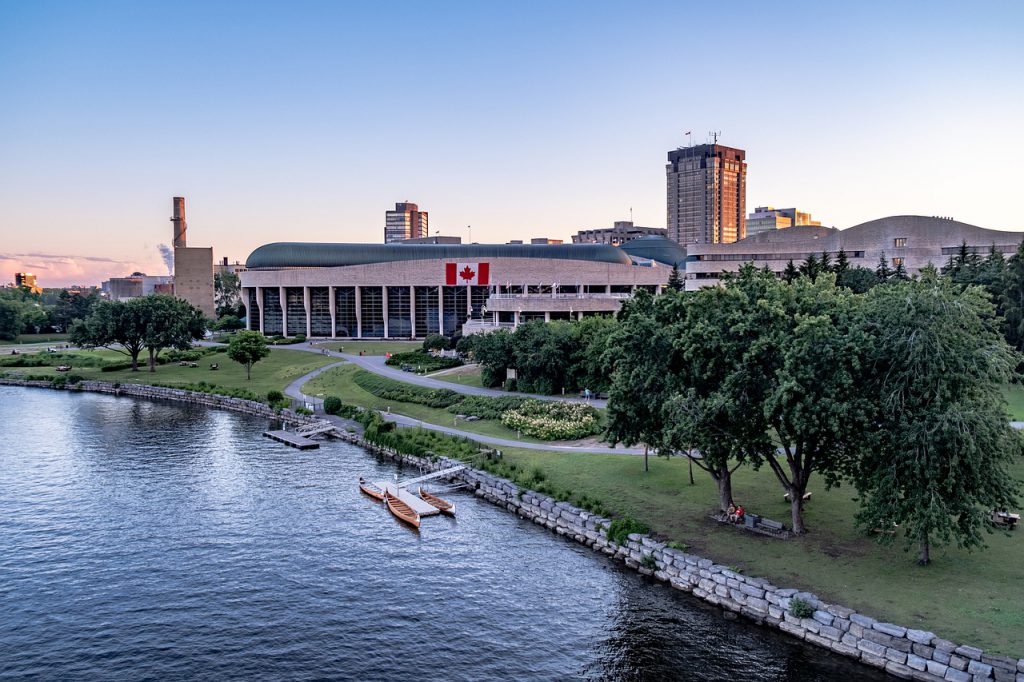
Toronto
Toronto is often compared to New York, and not without reason: it’s big, hectic, a bit rocked out, but still full of beautiful corners. Canada’s largest city is so packed with sights and activities that you’d have to live here for a few years to take it all in. The fourth and last major city before you say goodbye to the Canadian prairies is worth savoring to the fullest.
In addition to classic sights like the CN Tower, Toronto’s many different neighborhoods are sure to delight you. From the Victorian houses in Kensington Market to the hipster neighborhood Queen West with the cute Trinity Bellwoods Park to Chinatown, Little India/ Italy/Portugal/… there are many different faces of the same city to discover here. No wonder: Toronto consists half of immigrants from all over the world and is therefore a real melting pot.
For a bit of beach feeling, there’s either the appropriately named Beaches district, where you’ll find several beaches on Lake Ontario – or take a ferry to the Toronto Islands and enjoy a fantastic view of the city skyline in addition to the sun. Oh yes: Niagara Falls are very close from Toronto, of course they are a must on your itinerary.
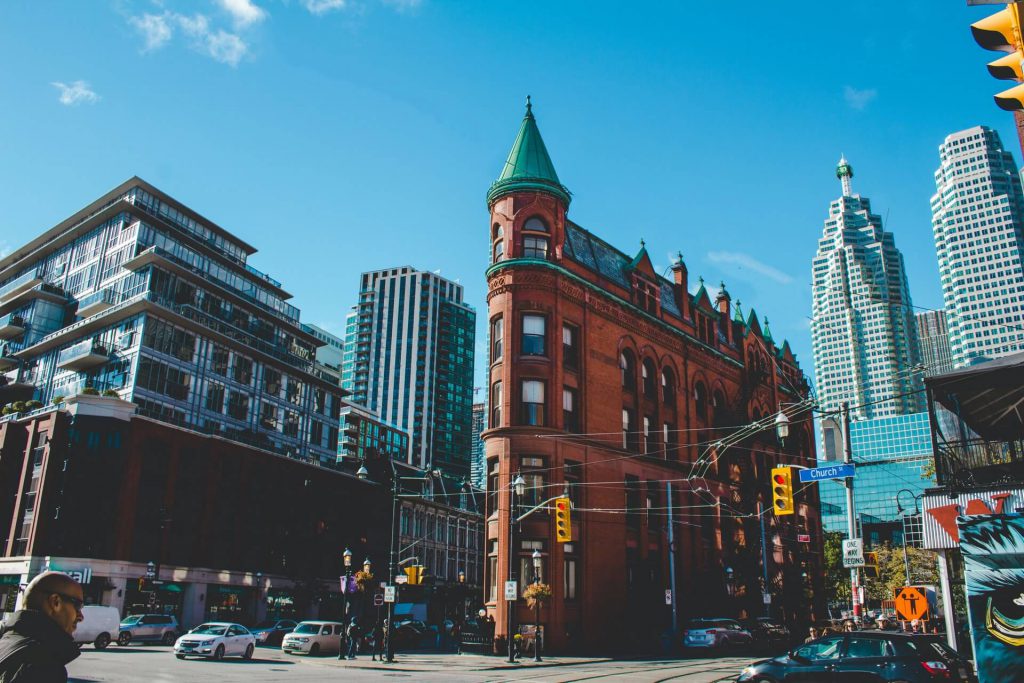
Ontario to Winnipeg
After this intensive city phase, you will head into the wilderness: Ontario with its typical Canadian endless forests and crystal clear lakes awaits you. It’s over 2,000 kilometers to the next major city, Winnipeg, and on the way you’ll drive through some of the landscapes for which Canada is famous worldwide.
Depending on how much time you want to take for this section, there are countless provincial and national parks to see along the way, each packed with wild (hiking) trails, rivers and lakes. If you just want to rush through Ontario with overnight stops (which we strongly advise against!), you should expect to spend at least 4 nights. The cheapest way to do this is at the park campgrounds, some of which are on your route.
If you want to enjoy Ontario to the fullest, we suggest the following route:
- Stop 1: Toronto – Grundy Lake Provincial Park (approx. 330 km)
- Stop 2: Grundy Lake – Killarney Provincial Park (approx. 110 km) (min. 2 nights!)
- Stop 3: Killarney – Lake Superior Provincial Park (approx. 600 km)
- Stop 4: Lake Superior – Pukaskwa National Park (approx. 220 km) (min. 2 nights!)
- Stop 5: Pukaskwa National Park – Sleeping Giant Provincial Park (approx. 300 km)
- Stop 6: Sleeping Giant – Quetico Provincial Park (approx. 220 km) (Paddler min. 3 nights!)
- Stop 7: Quetico – Winnipeg (approx. 595 km)
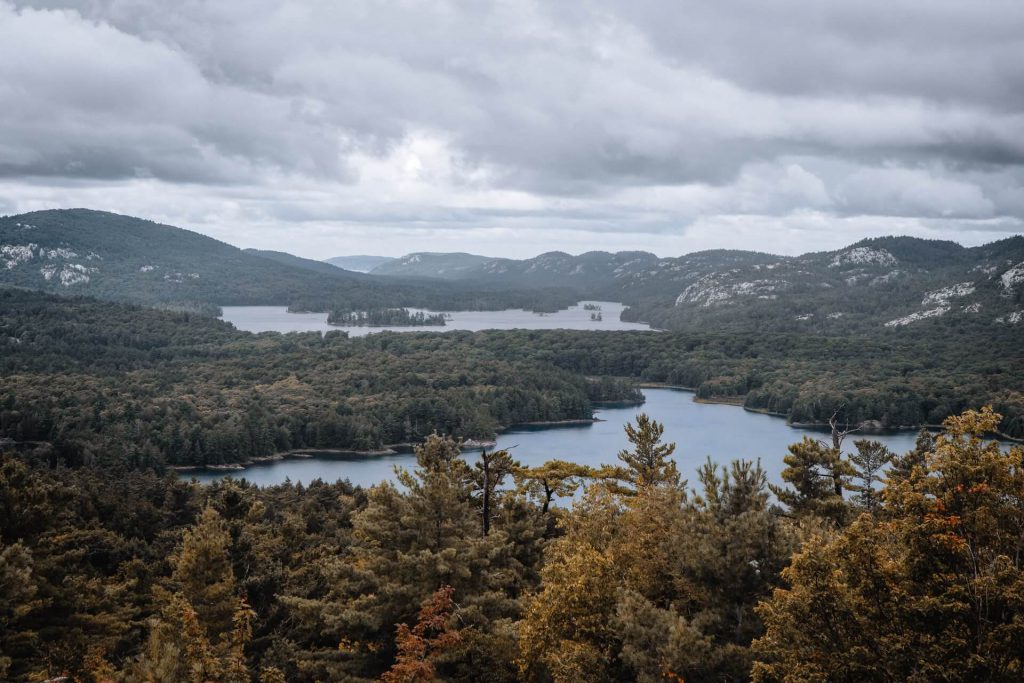
Manitoba and Saskatchewan
Welcome to Winnipeg, a real big city that will surely impress you after your days in the outback. Here you can stock up on supplies, do a bit of sightseeing, and take in some of the small but mighty nightlife, or at least grab a meal at a local eatery. Winnipeg is the capital of Manitoba and marks an important waypoint: More than half of the route is now behind you!
Freshly refilled, you are now in Manitoba, one of the less populated provinces of Canada. For wildlife fans there is a lot to see here. On this tour, we’ll detour to Riding Mountain National Park, which boasts a wide variety of wildlife, as well as great hiking trails, mountain biking trails and kayak/canoe spots.
Then it’s on to Regina in Saskatchewan, a nice town and perfect for a stopover before a long day in the car: It’s just under 760 kilometers to Calgary. On this stretch, you get a real road trip feeling. Nothing but endless expanses, agriculture and sleepy nests pass by your window until the twinkling lights of Calgary, the metropolis at the foot of the Rocky Mountains, suddenly appear in the evening. Now you have finally arrived in western Canada, in Alberta.
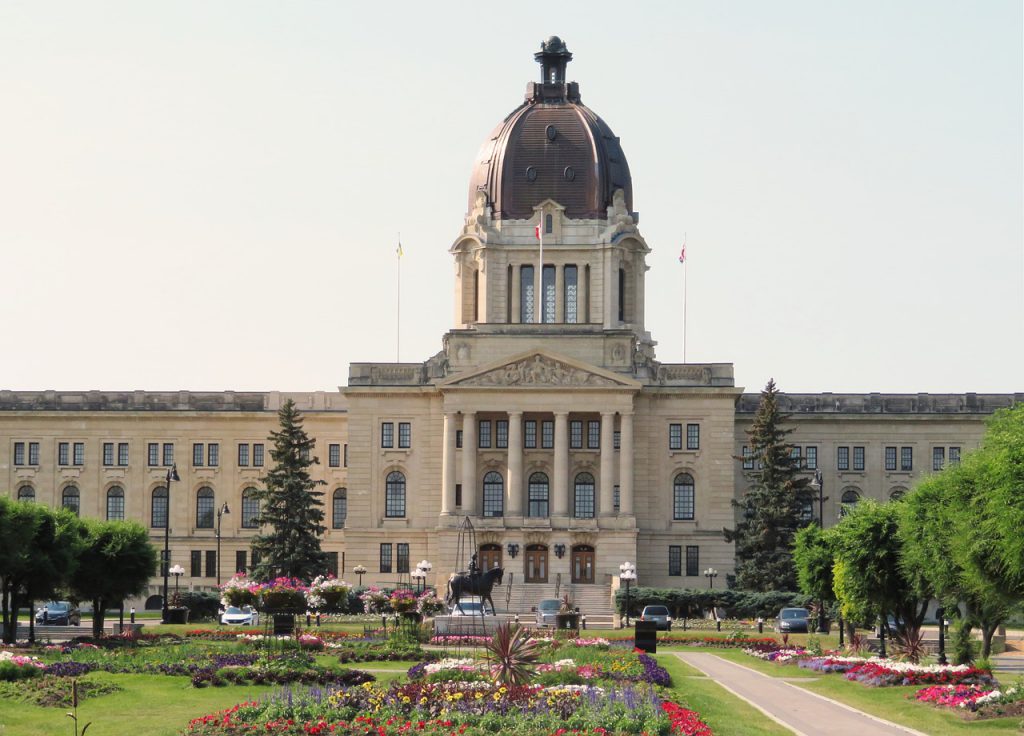
Calgary, Banff and/or Jasper
Calgary’s glittering skyline promises what the city delivers: Vibrant urban (night) life, attractions, festivals and exciting neighborhoods to explore. Add to that green gems like Prince’s Island or Canada’s second-largest urban city park, Fish Creek Provincial Park. Here you can hike, mountain bike, swim – all within the official city limits! The Rocky Mountains are within reach from here, and with them the last great wilderness that awaits you before you reach your destination in Vancouver.
At the latest here you should decide how much time you want to spend in the Rockies. You can either drive directly from Calgary to Banff and on to Whistler, or you can take the much less touristy, wild Jasper region as well. Both routes across the Rockies are breathtaking: Either you cross the main ridge between Banff and Whistler through Glacier National Park or, between Jasper and Whistler, through Mount Robson Provincial Park.
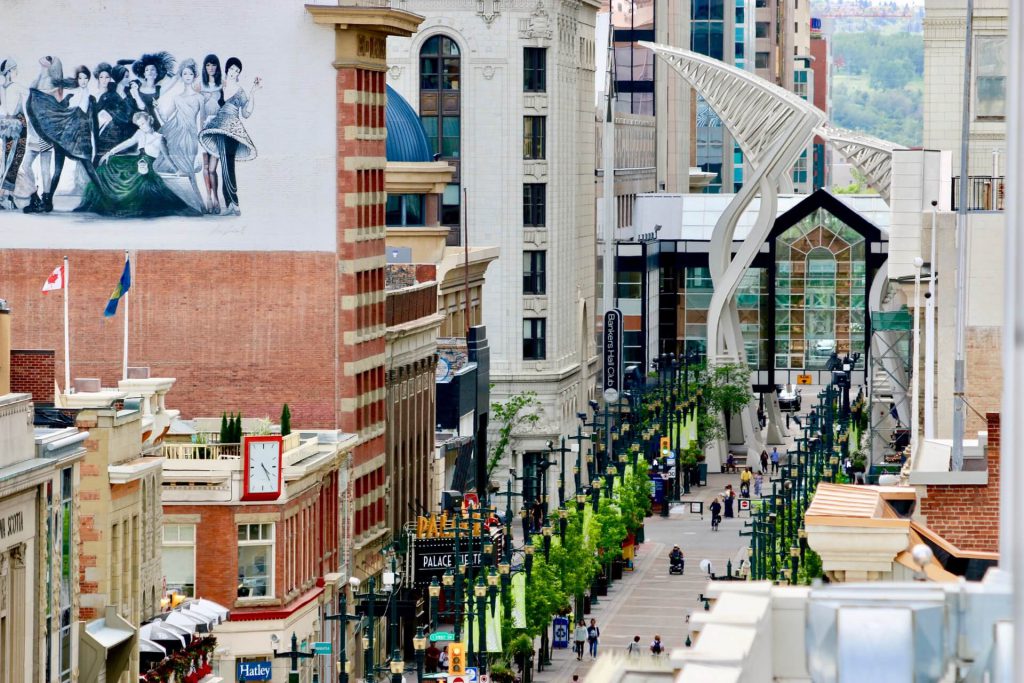
Banff
Banff is a real tourist hotspot. There are countless accommodations, restaurants and attractions here and you are guaranteed to meet nice people with whom you can go hiking, skiing, mountain biking or just party. This little town is a year-round destination, and with good reason: Banff National Park offers some of the most beautiful scenery in the Rocky Mountains. Lake O’Hara, The Great Divide, and Mount Assiniboine are just a few names you’ve probably heard in the course of your research – and they’re all here.

Jasper
Jasper National Park is no less beautiful. However, you’ll encounter far fewer people there than in Banff National Park. It’s home to stunning sites like Maligne Lake, Athabasca Falls, and the highest peak in the Canadian Rockies, Mt. Robson. Here, too, you can easily spend several days hiking or biking, and then drive through the magnificent Mt. Robson Provincial Park towards Whistler.
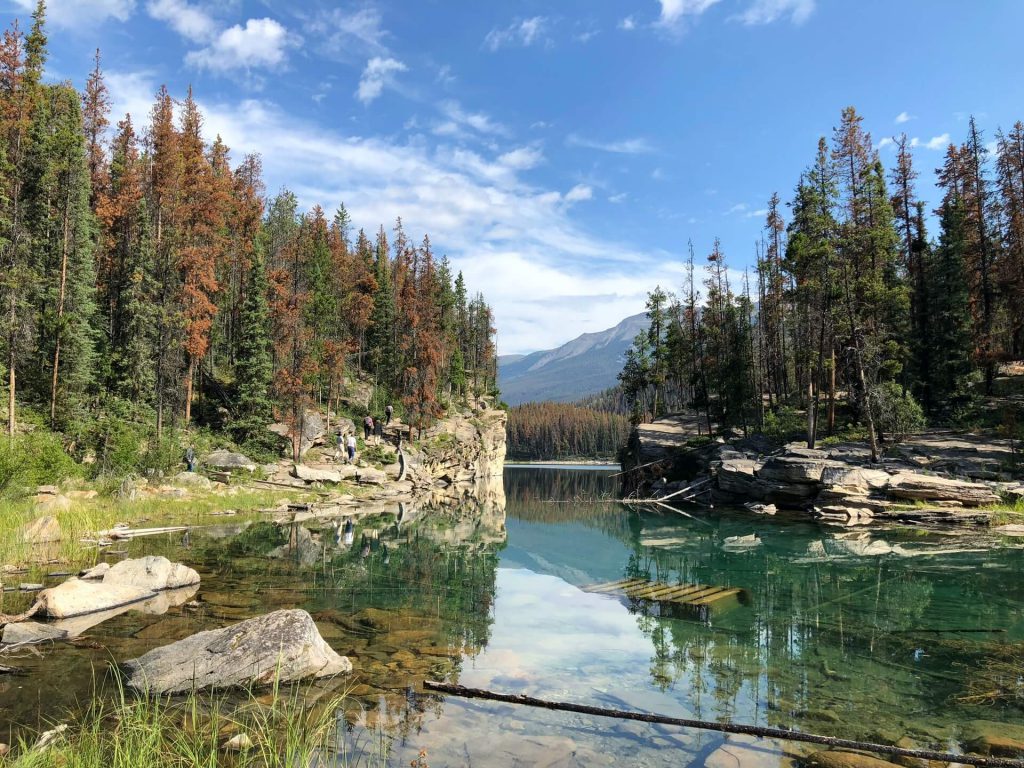
Whistler
Whistler is not just a place, but a whole region whose name hides a huge outdoor playground full of ski resorts, cross-country ski trails, bike parks and hiking trails. Just a two-hour drive from Vancouver, it’s one of the Rocky Mountains’ main hubs for locals as well as international tourists. In the evenings, outdoor enthusiasts celebrate the day’s exploits in one of the restaurants and bars, often well into the night.
Whistler is divided into different villages: Upper Whistler, Alta Vista, Whistler Village, Creekside and Function Junction. If you plan to come biking in summer, Whistler Village is the place of your choice: Here you will find the entrance to the Whistler Bikepark at Blackcomb. Basically, however, it doesn’t really matter where you stay: There are entrances to the huge hiking, trail and ski area at almost every corner.
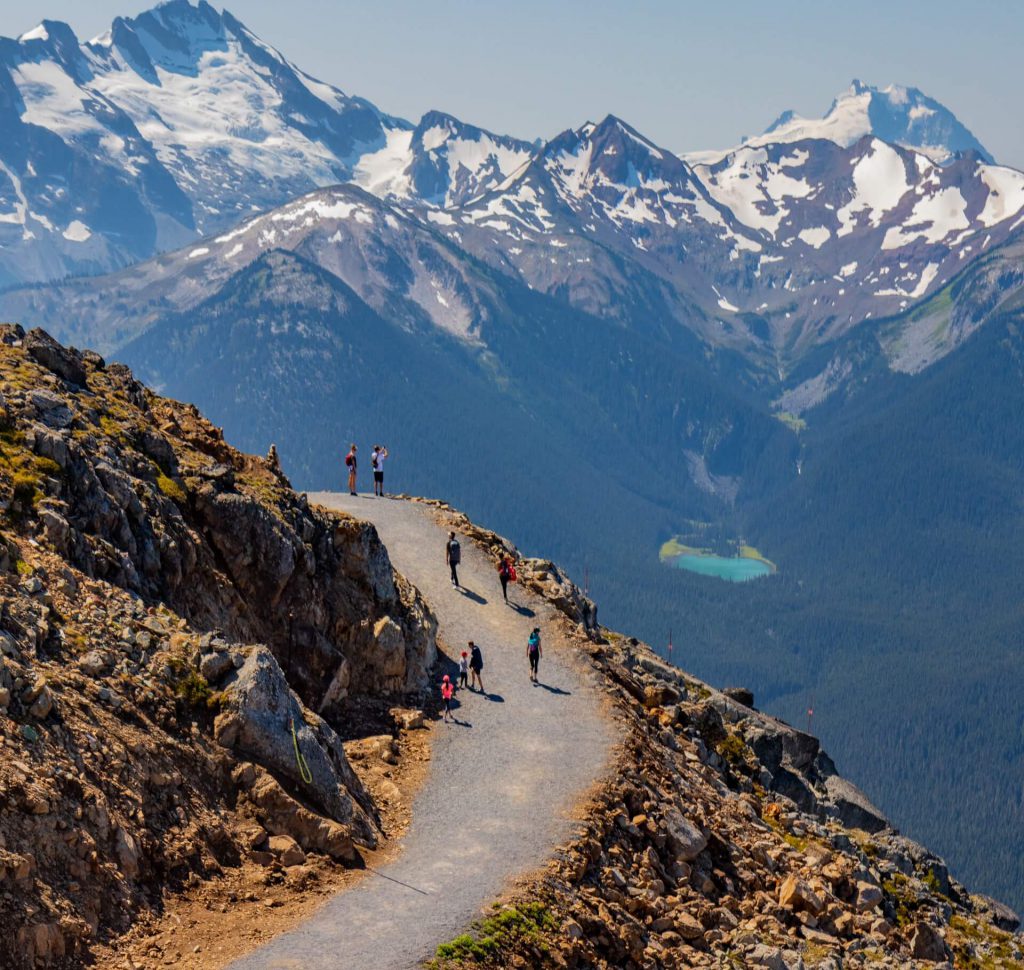
Vancouver
On the appropriately named Sea to Sky Highway, you leave Whistler behind and soon find yourself in Squamish on the Howe Fjord: you’ve reached the Pacific! Barely an hour later, Vancouver appears in front of you and with it the final highlight of Canada: Just like Toronto or Montreal, Vancouver regularly tops the best city lists (why don’t we all live in Canada? 😉 ). The combination of international metropolis, outdoor paradise and last but not least the possibility to ski as well as surf within one day is almost unique worldwide.
Besides numerous outdoor activities (kayaking in Deep Cove, hiking on Grouse Mountain, biking in Stanley Park, surfing on one of the beaches) Vancouver is also a mecca for foodies. From eccentric fusion restaurants in Gastown to the Far Eastern flavor explosion at Richmond Night Market, you could easily spend your last days in Canada just eating.
That might be just the thing after such a long trip, coupled with just letting yourself drift: Vancouver also has a lot of museums and tourist attractions, of course, but you’ll probably experience the city most intensely by just wandering aimlessly through the neighborhoods. Maybe this is also a good way to say goodbye to a backpacking trip that you will surely remember for a long time.
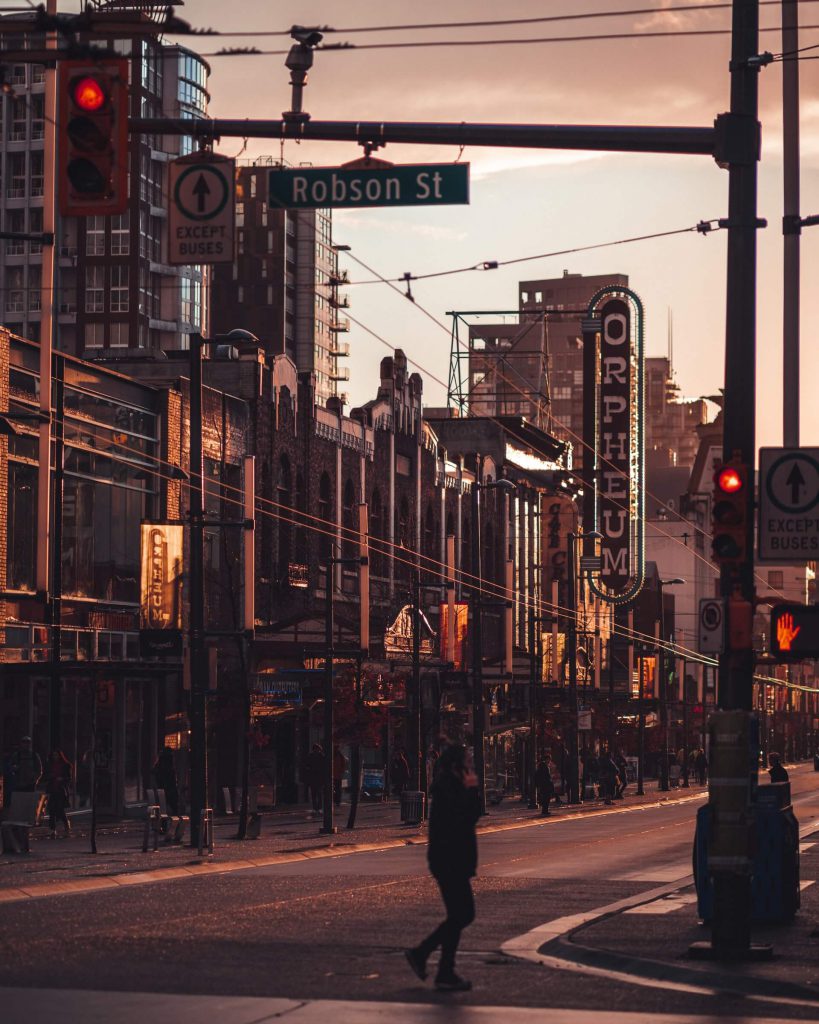
General Info about Canada
Arriving
All major Canadian cities have airports that you can reach from Europe. Most travelers land either in Montreal, Toronto or Vancouver, but with stopovers in these cities, other destinations such as Halifax or Calgary are easily accessible. Flights are available from around 400 euros upwards, depending on where you fly to.
Getting around
Within the cities there are very good public transportation systems as well as a good bike infrastructure with rental bikes. Basically, Canada, like all of North America, is designed primarily for getting around by car. The size of the country alone makes having your own car the most convenient choice of transportation. Should you fancy more contact with the country’s inhabitants, you can also opt to travel by long-distance bus or train – both of which, however, will make it difficult for you to fully appreciate the country’s wilderness.
Hitchhiking is also possible, but potentially seriously dangerous, especially in the sparsely populated provinces and the Rocky Mountains: you probably don’t want to encounter bears or wolves at night alone if you haven’t made it to a town.
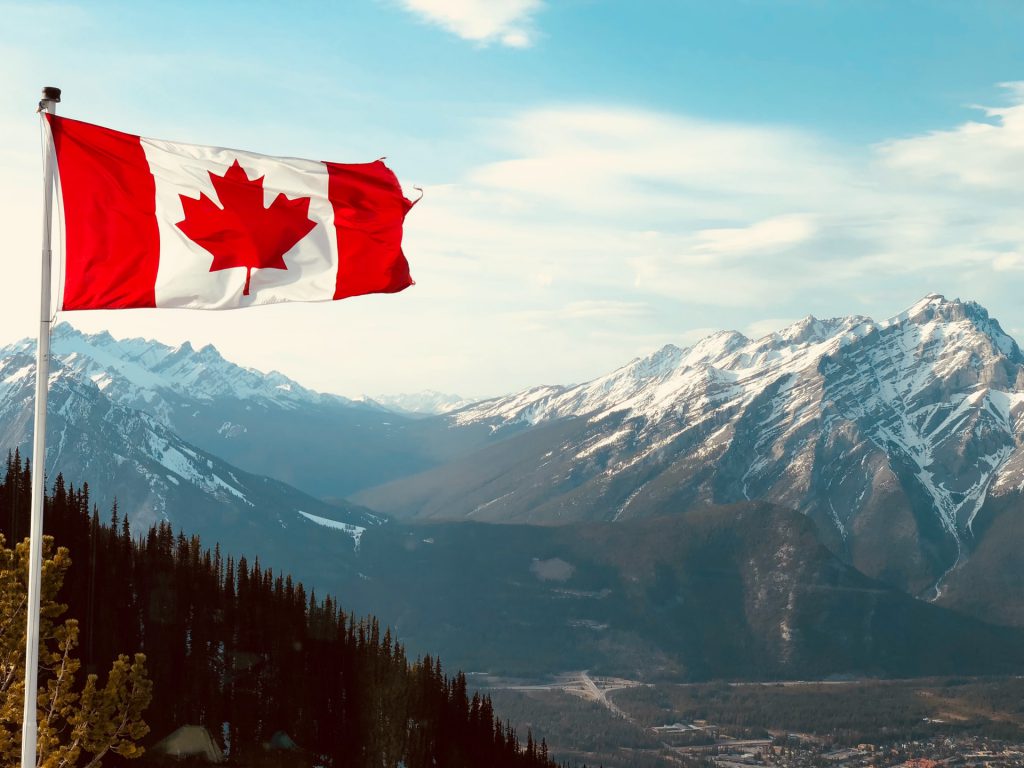
Sleep
Since you’re in a highly industrialized country, you won’t lack for accommodations anywhere. From top-rated outdoor campgrounds to high-class hotels, you’re sure to find a place to sleep depending on the region.
Food
As a country of immigrants, Canada has a very broad culinary spectrum. You may well find yourself eating one of the best Indian curries of your life here, just as you might fall in love with poutine, the local French fry specialty, in Montreal. For those on a tight budget, supermarkets and fast food chains offer more than enough options to keep you supplied on the cheap. And if you’re in the mood for a bit of luxury, you’ll find expensive restaurants with exquisite menus in all major cities.




